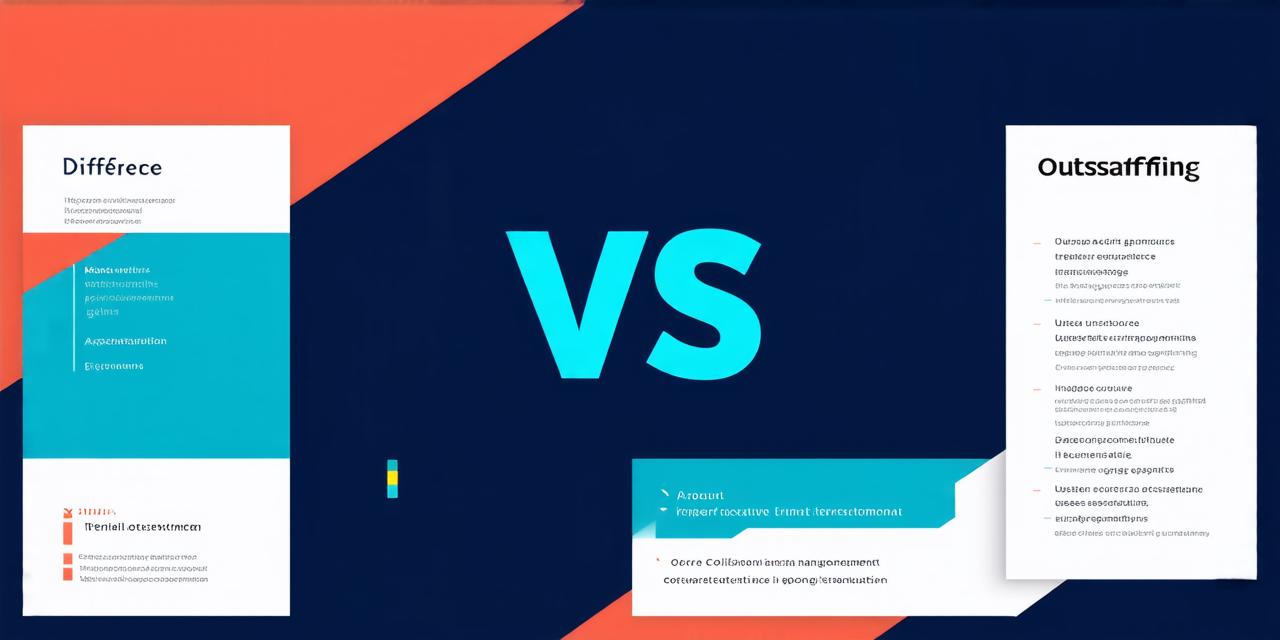As a business owner, you are always looking for ways to optimize your operations and reduce costs. One common strategy is to consider outsourcing or outstaffing your business processes. While both options have their pros and cons, it can be challenging to determine which one is best for your specific needs.
What is outsourcing?
Outsourcing involves hiring a third-party vendor to perform tasks that are typically done in-house by your employees. These tasks can include everything from administrative duties, such as data entry and bookkeeping, to more specialized functions, such as software development and marketing.
The main advantage of outsourcing is the ability to tap into a pool of skilled labor without having to invest in expensive training or infrastructure. Additionally, outsourcing can help you focus on your core competencies, allowing you to concentrate on what you do best and leave the more routine tasks to the experts.
However, there are also some potential drawbacks to outsourcing. For example, you may lose some control over the quality of work being performed, as well as the ability to customize processes to your specific needs. Additionally, communication and coordination can be challenging when working with a third-party vendor, particularly if they are located in a different time zone or country.
What is outstaffing?
Outstaffing, on the other hand, involves hiring temporary or permanent employees to work on specific projects or tasks. These employees typically have specialized skills and can be brought in to supplement your existing team or fill gaps in areas where you may lack expertise.
One of the main advantages of outstaffing is the ability to scale up or down quickly, depending on the needs of your business. This can be particularly useful during peak periods or when working on a large-scale project that requires additional resources. Additionally, outstaffing allows you to maintain more control over the quality of work being performed and ensure that it aligns with your specific requirements and goals.
However, there are also some potential drawbacks to outstaffing. For example, hiring and training employees can be expensive, particularly if you need to bring in highly skilled workers. Additionally, outstaffing may require significant investment in infrastructure and resources, such as office space and equipment.

Case study: A comparison between outsourcing and outstaffing
Let’s take a look at an example to help illustrate the differences between outsourcing and outstaffing. Suppose you are running a small marketing agency that specializes in social media management for small businesses. Your current team consists of three employees, but you are struggling to keep up with the demand for your services.
One option could be to outsource some of your social media management tasks to a third-party vendor. This might involve hiring a freelance social media manager or a team of managers from an outsourcing company to handle posting, engagement, and analytics. This would allow you to focus on other areas of your business, such as client acquisition and strategic planning.
However, there are also some potential drawbacks to this approach. For example, you may lose some control over the quality of work being performed, as well as the ability to customize processes to your specific needs. Additionally, communication and coordination can be challenging when working with a third-party vendor, particularly if they are located in a different time zone or country.
Another option could be to outstaff your social media management team by hiring additional employees to handle the increased demand for services. This might involve bringing in experienced social media managers with specialized skills and expertise in areas such as content creation, influencer marketing, and community management.
While this approach would give you more control over the quality of work being performed and ensure that it aligns with your specific requirements and goals, there are also some potential drawbacks to consider. For example, hiring and training employees can be expensive, particularly if you need to bring in highly skilled workers. Additionally, outstaffing may require significant investment in infrastructure and resources, such as office space and equipment.
